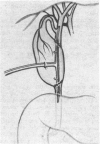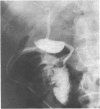Abstract
Between May 1968 and 31 December 1976 60 orthotopic liver allografts were transplanted by the Cambridge-King's College Hospital team. During this period there were changes in the selection of patients and their management. Initially some patients were operated on when they were too ill, often because of a prolonged wait for a donor. There was a high incidence of fatal complications of biliary drainage in patients who survived longer than the first week after operation. Improved results have been due to the development of a simple method of preserving the liver, thereby increasing the pool of potential donors, and by a new technique of biliary drainage, which allows well-vascularised anastomoses without tension, retains the sphincter of Oddi, and leaves access for radiological examination of the biliary tree. Uncontrollable rejection of the liver has occurred in less than 10% of cases. This contrasts strongly with the incidence of rejection among kidney transplants. Six patients have lived for over a year, the longest surviving for more than five years, and 13 patients were still alive at the beginning of 1977.
Full text
PDF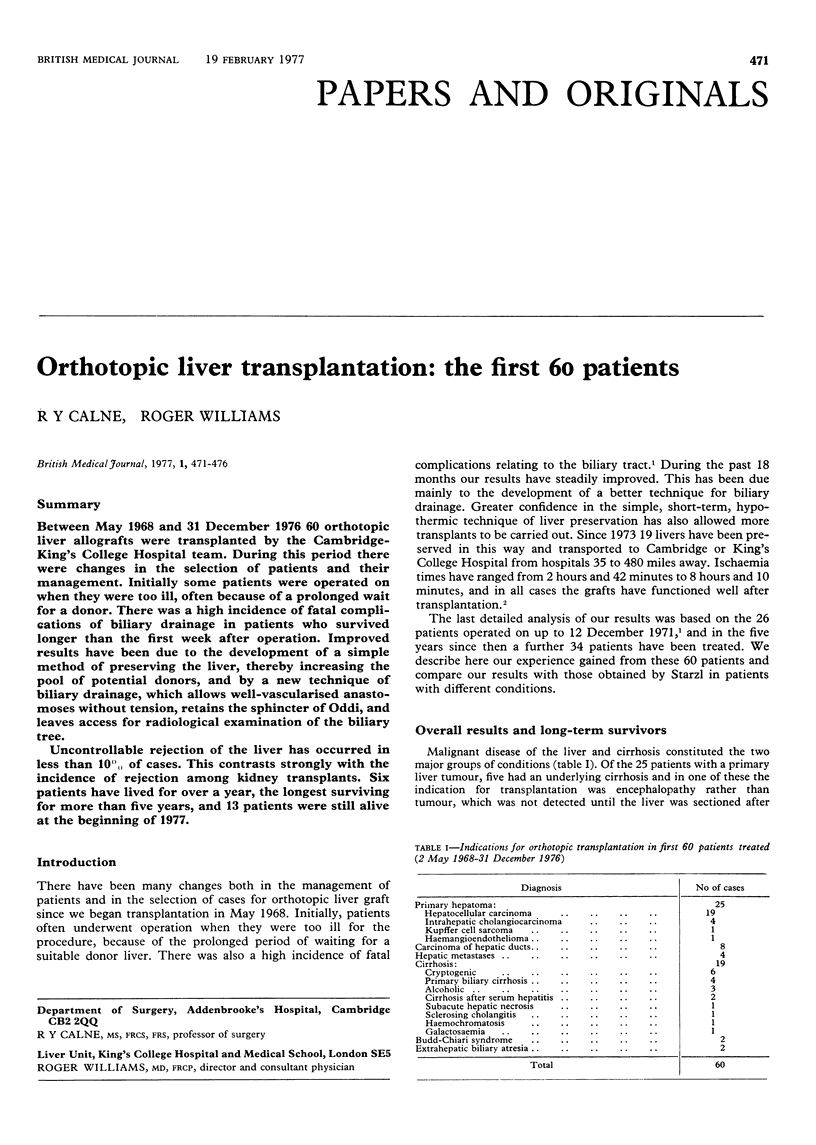

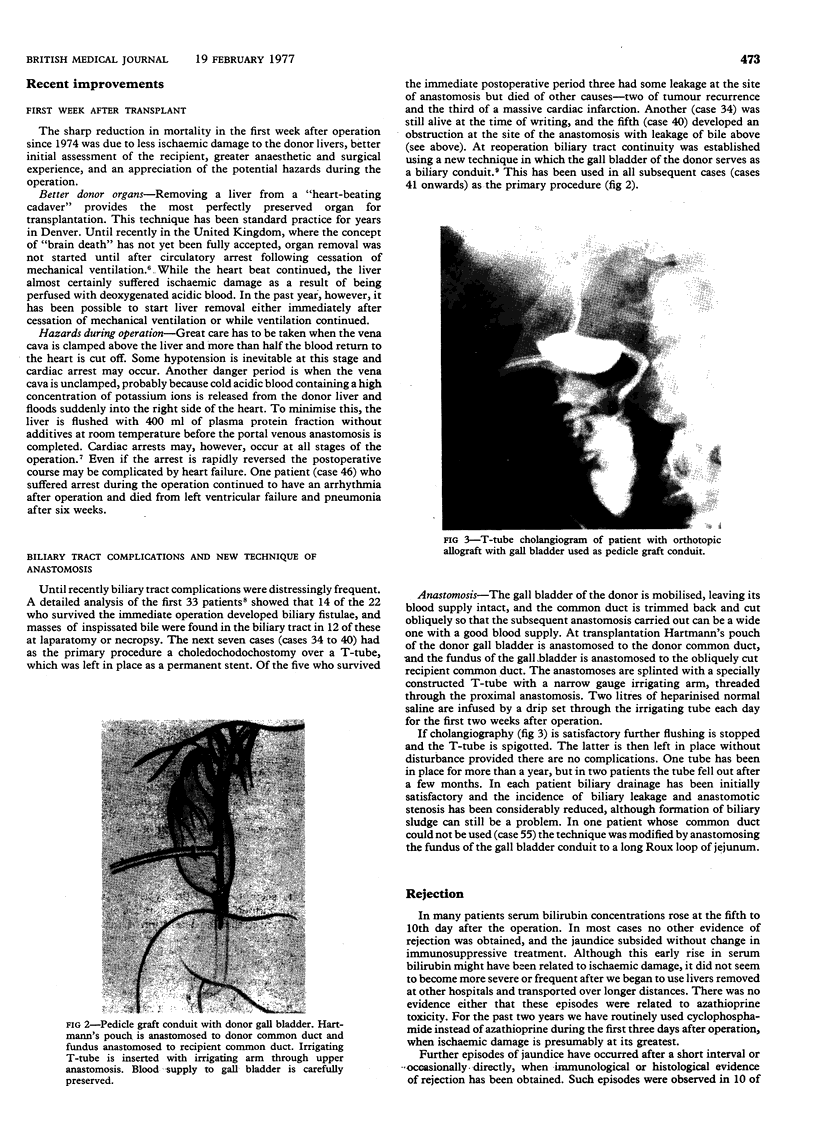
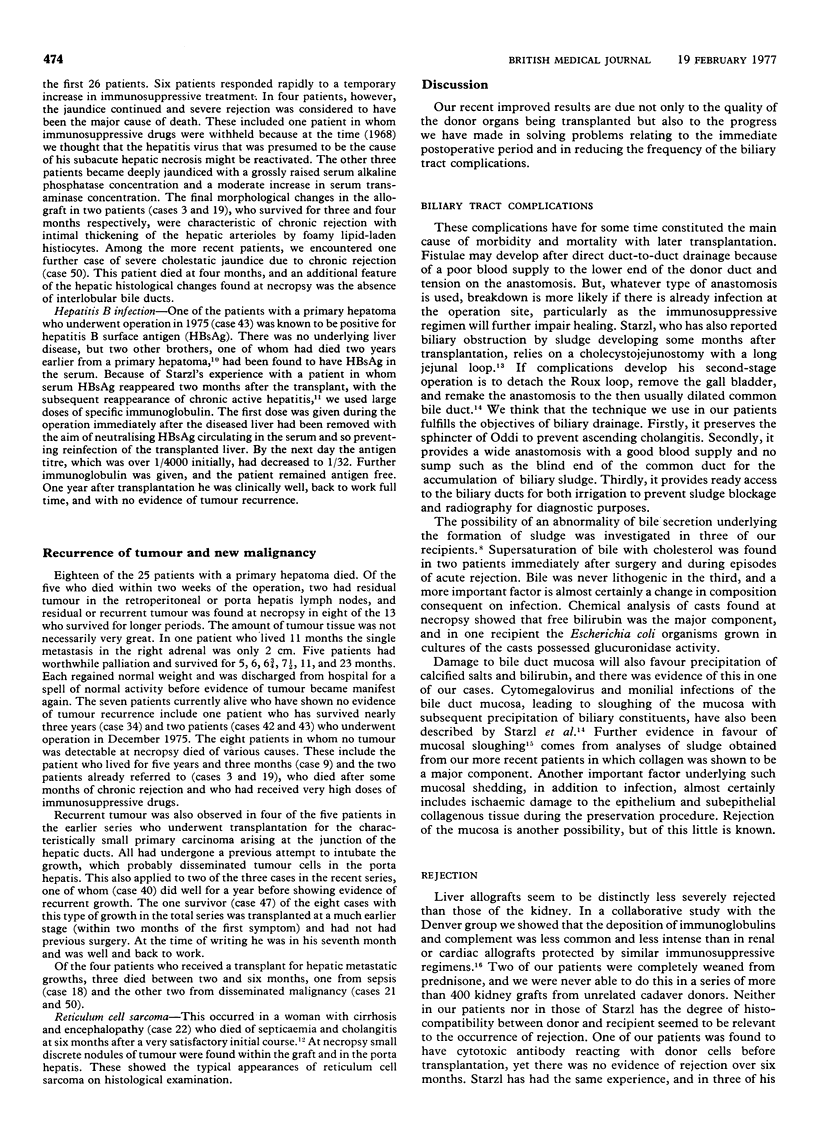

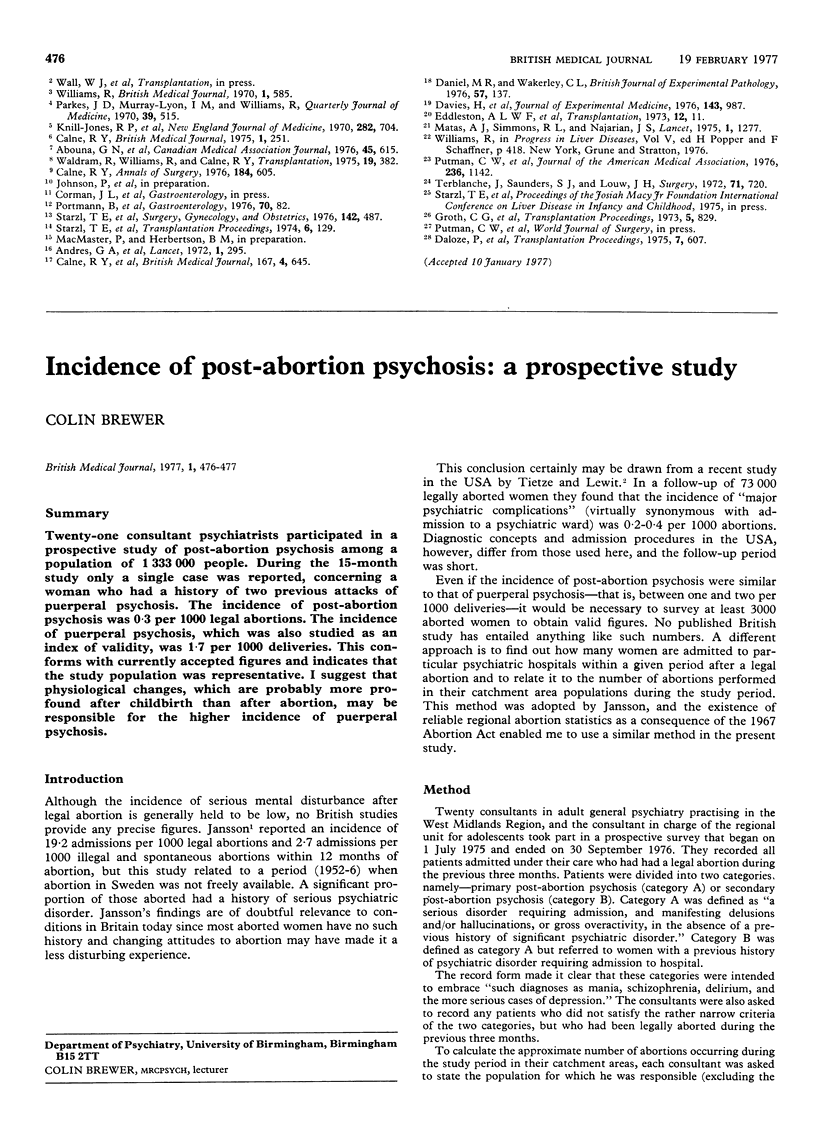
Images in this article
Selected References
These references are in PubMed. This may not be the complete list of references from this article.
- Abouna G. M., Preshaw R. M., Silva J. L., Hollingsworth W. J., Hershfield N. B., Novak W., Shaw D. T., Vetters J. M. Liver transplantation in a patient with cholangiocarcinoma and ulcerative colitis. Can Med Assoc J. 1976 Oct 9;115(7):615–619. [PMC free article] [PubMed] [Google Scholar]
- Calne R. Y. A new technique for biliary drainage in orthotopic liver transplantation utilizing the gall bladder as a pedicle graft conduit between the donor and recipient common bile ducts. Ann Surg. 1976 Nov;184(5):605–609. doi: 10.1097/00000658-197611000-00012. [DOI] [PMC free article] [PubMed] [Google Scholar]
- Daniel M. R., Wakerley C. L. Factors influencing the survival of cell monolayers during storage at 4 degrees. Br J Exp Pathol. 1976 Apr;57(2):137–147. [PMC free article] [PubMed] [Google Scholar]
- Eddleston A. L., Smith M. G., Mitchell C. G., Williams R. Application of the leucocyte migration test to the diagnosis of rejection after liver transplantation. Transplantation. 1971 Jul;12(1):11–17. doi: 10.1097/00007890-197107000-00002. [DOI] [PubMed] [Google Scholar]
- Groth C. G., Dubois R. S., Corman J., Gustafsson A., Iwatsuki S., Rodgerson D. O., Halgrimson C. G., Starzl T. E. Metabolic effects of hepatic replacement in Wilson's disease. Transplant Proc. 1973 Mar;5(1):829–833. [PMC free article] [PubMed] [Google Scholar]
- Knill-Jones R. P., Buckle R. M., Parsons V., Calne R. Y., Williams R. Hypercalcemia and increased parathyroid-hormone activity in a primary hepatoma. Studies before and after hepatic transplantation. N Engl J Med. 1970 Mar 26;282(13):704–708. doi: 10.1056/NEJM197003262821302. [DOI] [PubMed] [Google Scholar]
- Matas A. J., Simmons R. L., Najarian J. S. Chronic antigenic stimulation, herpesvirus infection, and cancer in transplant recipients. Lancet. 1975 Jun 7;1(7919):1277–1279. doi: 10.1016/s0140-6736(75)92555-6. [DOI] [PubMed] [Google Scholar]
- Parkes J. D., Murray-Lyon I. M., Williams R. Neuropsychiatric and electro-encephalographic changes after transplantation of the liver. Q J Med. 1970 Oct;39(156):515–527. [PubMed] [Google Scholar]
- Portmann B., Schindler A. M., Murray-Lyon I. M., Williams R. Histological sexing of a reticulum cell sarcoma arising after liver transplantation. Gastroenterology. 1976 Jan;70(1):82–84. [PubMed] [Google Scholar]
- Problem-oriented medical records. Lancet. 1972 Feb 5;1(7745):295–296. [PubMed] [Google Scholar]
- Starzl T. E., Ishikawa M., Putnam C. W., Porter K. A., Picache R., Husberg B. S., Halgrimson C. G., Schroter G. Progress in and deterrents to orthotopic liver transplantation, with special reference to survival, resistance to hyperacute rejection, and biliary duct reconstruction. Transplant Proc. 1974 Dec;6(4 Suppl 1):129–139. [PMC free article] [PubMed] [Google Scholar]
- Starzl T. E., Porter K. A., Putnam C. W., Schroter G. P., Halgrimson C. G., Weil R., 3rd, Hoelscher M., Reid H. A. Orthotopic liver transplantation in ninety-three patients. Surg Gynecol Obstet. 1976 Apr;142(4):487–505. [PMC free article] [PubMed] [Google Scholar]
- Terblanche J., Saunders S. J., Louw J. H. Prolonged palliation in carcinoma of the man hepatic duct junction. Surgery. 1972 May;71(5):720–731. [PubMed] [Google Scholar]
- Waldram R., Williams R., Calne R. Y. Bile composition and bile cast formation after transplantation of the liver in man. Transplantation. 1975 May;19(5):382–387. doi: 10.1097/00007890-197505000-00004. [DOI] [PubMed] [Google Scholar]
- Williams R., Smith M., Shilkin K. B., Herbertson B., Joysey V., Calne R. Y. Liver transplantation in man: the frequency of rejection, biliary tract complications, and recurrence of malignancy based on an analysis of 26 cases. Gastroenterology. 1973 May;64(5):1026–1048. [PubMed] [Google Scholar]




